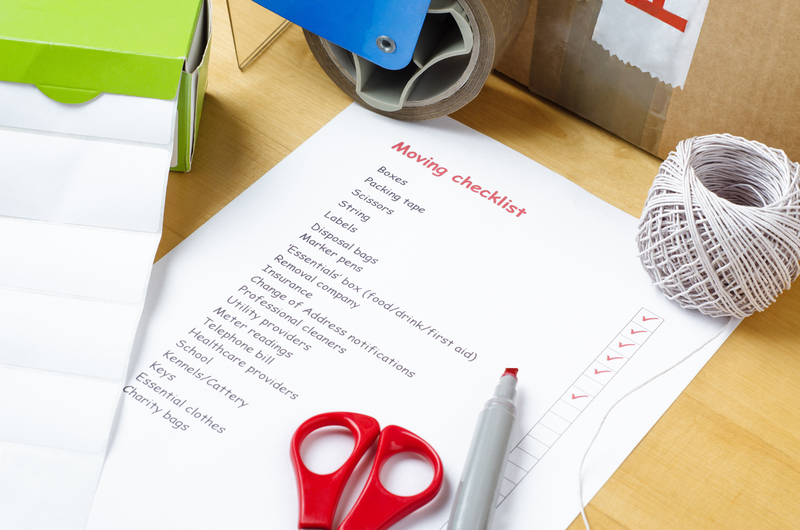Your Go-To Guide for Solo Heavy Lifting Success
Solo heavy lifting--tackling significant weights on your own--can be both empowering and intimidating. Whether you're looking to increase muscle mass, boost mental stamina, or enhance your functional strength, solo heavy lifting training is a challenge worth taking on. This guide will walk you through everything you need to know to make your single-person heavy lifting sessions successful, safe, and rewarding.

Why Undertake Solo Heavy Lifting?
Solo lifting gives you unmatched flexibility and control over your workout. Without having to coordinate with a spotter or workout partner, you can focus on your own routine, push your specific limits, and train your body and mind for real-world resilience. Benefits include:
- Practice self-reliance: Builds confidence in your capabilities
- Flexible scheduling: Lift when it's convenient for you
- Personalized progress: Track and adjust your own milestones
- Mental toughness: Sharpen focus and motivation through solitary training
The Core Principles of Solo Heavy Lifting Success
To guarantee success and minimize risk with individual heavy lifting, it's important to follow a set of time-tested principles. Let's break these down:
- Technique before weight: Prioritize perfect form over heavier loads
- Safety precautions: Employ safeguards like power racks, proper warm-ups, and controlled movements
- Listen to your body: Recognize fatigue and prevent injury by stopping before form breaks down
- Structured progression: Use gradually increasing loads and planned recovery for steady improvement
- Consistency: Progress is built on regular, disciplined practice
Planning Your Solo Heavy Lifting Program
Success in lifting weights alone starts with creating a program tailored to your goals and current abilities. Here's how to structure your plan:
1. Define Your Lifting Objectives
*Are you aiming to build muscle (hypertrophy), develop maximal strength, or improve power and athleticism?* Your answer will determine rep ranges, weights, and rest periods.
2. Program the Big Three Lifts
The cornerstone of solo heavy lifting routines is the inclusion of compound movements. Focus on these lifts:
- Squat: For full-body development, emphasizing legs and core
- Deadlift: Builds posterior chain and total-body power
- Bench Press: Develops chest, shoulders, and triceps
3. Accessory Lifts and Balance
Don't neglect supporting muscles. Incorporate accessory exercises like:
- Rows and pullups for back strength
- Overhead press for shoulder stability
- Core movements like planks or ab rollouts
4. Plan Loads and Progression
Use the principle of progressive overload: gradually increase weights, reps, or sets over time. Track your lifts in a training journal. Consider working with percentages of your 1-rep max (1RM) for effective scaling.
5. Safety Protocols for Lifting Alone
Never compromise safety for ego. Always use spotter arms when bench pressing, set safety pins for squats, and invest in quality equipment. For new or personal-record lifts, err on the side of caution.
Gearing Up: Best Equipment for Solo Heavy Lifting Success
The right gear ensures the security and effectiveness of your one-person heavy lifting session. Here's your essential checklist:
- Power rack or squat cage: Vital for heavy lifts, offering adjustable safety pins/arms
- Barbell and bumper plates: Durable and versatile for key movements
- Bench: Flat or adjustable, for presses and step-ups
- Lifting belt: Extra support for lower back during maximal efforts
- Quality footwear: Stable soles for squats, deadlifts, and presses
- Chalk or lifting straps: Improved grip for pulling exercises
- Mirror or video setup: To monitor and adjust technique
Pro Tip: If training at home, make sure your flooring is reinforced for heavy lifts and consider neighbors or noise.
Solo Heavy Lifting Safety: Strategies and Best Practices
There's no room for shortcuts when it comes to safety--especially when training alone. Follow these tips for a secure and productive solo heavy lifting routine:
- Warm up thoroughly: Mobilize joints and raise body temperature before lifting heavy.
- Set safety stops: Use safety arms for bench and squats; never rely solely on collars/pins.
- Clear the lifting area: Make room for safe bar drops or quick exits from failed reps.
- Never max out alone: Opt for sub-maximal loads or use machines for true max attempts.
- Keep your phone or alert device handy: In emergencies, ensure a way to call for help.
Listening to Your Body: Injury Prevention for Solo Heavy Lifters
Learning to read bodily signals is critical when you have no spotter. Here's how:
- Stop at the first sign of sharp or unusual pain.
- Don't fight through breakdowns in form. Quality trumps quantity every time.
- Watch for overtraining signs: Extreme fatigue, lingering soreness, and mood drops.
Mastering Solo Motivation and Focus During Heavy Lifting
Training on your own means you must become your own coach and cheerleader. Here's how to stay motivated and focused during solo heavy lifting workouts:
- Set micro-goals: Celebrate minor wins--one more rep, five more pounds, perfect form.
- Curate your playlist: Energizing music boosts focus and intensity.
- Visualize success: Picture perfect lifts before you perform them.
- Use self-talk and affirmations: Replace self-doubt with positive reinforcement.
- Track your progress: Log every workout and savor seeing the numbers climb.
Programming Examples for Solo Heavy Lifting Success
Here are sample routines using different training philosophies, all optimized for solo lifters:
Example 1: Full Body Strength Sessions (3x/week)
- Barbell back squat - 4x5
- Bench press (with safety rails) - 4x5
- Deadlift - 3x5
- Barbell row - 3x8
- Plank - 3x 45 seconds
Example 2: Upper/Lower Split (4x/week)
Upper:- Overhead press - 4x6
- Pendlay row - 4x8
- Incline bench press - 3x8
- Pull-ups - 3xAMRAP
- Front squat - 4x5
- Romanian deadlift - 4x6
- Walking lunge - 3x12 each leg
- Weighted sit-up - 3x10
Example 3: Powerlifters' Block (Advanced)
- Day 1: Squat focus (competition squat, paused squats, leg accessories)
- Day 2: Bench press focus (competition bench, close grip, triceps work)
- Day 3: Deadlift focus (competition deadlift, deficit pulls, back accessories)
*Always use appropriate safety measures and adjust intensity to your experience.
Nutrition and Recovery for Solo Heavy Lifting Triumph
Your nutrition, hydration, and sleep are every bit as crucial as your sets and reps, especially during intense one-person lifting workouts.
- Prioritize protein and complex carbs: For muscle repair and sustained energy
- Stay hydrated: Dehydration impairs strength, power, and recovery
- Rest and sleep: Aim for 7-9 hours per night to promote optimal hormonal environment
- Active recovery: Light cardio, stretching, and massage can improve circulation and healing
Tip: Keep a post-workout shake or meal handy for easy recovery nutrition, and plan rest days into your program.
Common Mistakes in Solo Heavy Lifting--and How to Avoid Them
Every solo lifter faces hurdles. Here's how to avoid the big pitfalls:
- Neglecting warm-ups: Increase injury risk and reduce performance
- Poor form to chase numbers: Leads to pain and plateaus
- Overtraining: Grinding without meals or sleep leads to burnout
- Ignoring safety options: Skipping spotter rails or belts is never worth it
- Skipping logging: Without notes, progress is hard to measure and repeat
When to Call for Spotting or Professional Help
Even the most dedicated solo lifters need backup sometimes. Know the signs that you should train with a partner or coach:
- You're attempting a new 1RM or maximal effort, especially on bench press or squat
- Your progress has stalled for weeks or you repeatedly hit plateaus
- You experience persistent pain or suspect an injury
- You're unsure about your form and can't self-correct via video review

Solo Heavy Lifting Success Stories
Many renowned powerlifters, Olympic athletes, and fitness enthusiasts have conquered their milestones through solo strength training. From early morning garage sessions to after-work basement gyms, thousands attribute breakthroughs in confidence and performance to the self-discipline earned by lifting heavy alone.
Embrace your own journey. Use benchmarks and milestones to celebrate every victory, whether it's a new personal best or a flawless rep with perfect form.
Conclusion: Make Solo Heavy Lifting Your Secret Weapon
If your goal is to become stronger, more independent, and mentally tougher, few pursuits compare to consistent, safe, and strategic solo heavy lifting. With careful planning, proper equipment, and an unwavering commitment to both safety and self-improvement, you'll discover the rewards of lifting heavy on your own echo far beyond the gym.
- Build physical and emotional resilience
- Set and surpass your own standards
- Champion both strength and safety
Ready to step up to the bar? Your go-to guide for solo heavy lifting success is here--use these strategies, trust your process, and enjoy every moment of powerful progress.



